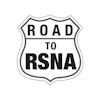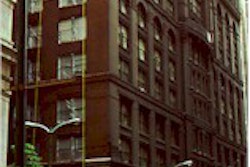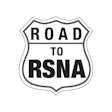The year's biggest news in ultrasound happened just this month, when Siemens Medical Engineering closed a deal to acquire the last major independent U.S. ultrasound firm, Acuson. It's too early to tell if the merger will translate into market dominance for the combined company. However, we're sure that the rest of the industry heavyweights -- GE, Agilent, ATL, and Toshiba -- aren't going to dry up and shy away from the fight for market share.
On the product front, the market for portable and handheld scanners continues to heat up worldwide, with first-time entrant MySono.com coming onto a field already populated by Terason and SonoSite. Contrast agent imaging and 3-D ultrasound are two other hot technologies to keep an eye on when visiting this year's exhibits at McCormick Place.
Acuson
Many analysts believe the marriage of Acuson and Siemens will create the world's largest ultrasound company. At Acuson's RSNA booth, new technological advancements in diagnostic ultrasound are being introduced by the company.
The showpiece of Acuson's product line, the Sequoia super-premium scanner, is receiving some enhancements for this year's meeting. A key new feature is tissue equalization technology (TEQ), a push-button capability that identifies whether the ultrasound echoes are coming from soft tissue or artifacts, and also sets the correct brightness for the study.
In addition, Acuson is debuting the Cadence contrast agent package for general imaging. The product features two developments in contrast imaging: Cadence Coherent Contrast Imaging and Cadence Agent Detection Imaging. Acuson is also featuring eUltrasound, an ultrasound scheduling and reporting software package that tracks patients from the time they enter the ultrasound department until the final report is generated and billing is notified.
Agilent Technologies
Andover, MA-based Agilent Technologies will showcase the addition of advanced capabilities to its ImagePoint Hx multispecialty ultrasound system. The ImagePoint Hx system provides digital and harmonic imaging for cardiac, abdominal, ob/gyn, vascular, pediatric, small parts, and musculoskeletal studies.
Agilent's high-resolution 15-6L ultraband intraoperative transducer, which is interchangeable with Agilent's Sonos 4500/5500 systems, is now available for the ImagePoint Hx scanner. The smaller (23-mm aperture) intraoperative transducer offers a frequency range of 5-10 MHz. Its small footprint and ergonomic handle provide access through minimal incisions. It is also optimized for imaging at 0-3 cm for non-surgical applications such as superficial scanning.
The L7535 probe, the 15-6L, and the L5035 transducers offer enhanced trapezoidal imaging with a greater field of view, allowing clinicians to view an entire thyroid, carotid bifurcation, or graft. In addition, the ultraband S4 sector and c3540 curved linear transducers now offer expanded tissue harmonic imaging. ImagePoint Hx also offers improved adaptive color on selected transducers, which automatically optimizes color and angio frequencies to ensure the best resolution and sensitivity.
GE Medical Systems
New technologies for GE's flagship Logiq 700 Expert scanner will be highlighted in the company's booth. These include digitally encoded ultrasound, which boosts weak flow reflector signals and suppresses unwanted signals and frequencies to improve sensitivity and penetration of ultrasound images, according to the company.
GE will also highlight B-flow imaging, a new technique the Waukesha, WI, vendor developed to study blood-vessel walls and blood flow. GE has added new codes to B-flow to enable its use on a wider range of transducers, thus allowing the visualization of blood flow in deeper structures.
Coded-harmonic angio imaging is another new technique available on Logiq 700 Expert. The technology brings the benefits of coded imaging to contrast-enhanced flow studies, with customized codes designed for different agents and applications. GE will demonstrate results of the technique as a work in progress.
The company will also show new developments in its other scanners. Technologies originally developed for Logiq 700 are being migrated further down the GE product line. For example, the Logiq 500 Pro scanner has been upgraded with automatic optimization in spectral Doppler mode. A new transducer, i12L, has also been added to the scanner's armamentarium of probes.
On the Logiq 400 Pro system, GE will demonstrate tissue harmonic imaging and automatic tissue optimization, which lets users select the best parameters for image display at the touch of a button.
MySono.com
Seoul, South Korea-based MySono.com will debut at the RSNA show with a novel sales strategy based solely on the Internet. The company, which was spun off in early 2000 from another Korean ultrasound firm, Medison, manufactures a notebook-sized grayscale portable ultrasound scanner.
MySono.com will be making its RSNA debut this month, with the focus on its flagship product, MySono 201. The company is targeting local medical clinics and offices for primary and immediate diagnosis, education centers, secondary hospital use (including emergency and delivery rooms), and public health clinics.
MySono 201's battery lasts more than two hours without a recharge, and the system has a storage capacity of 50 exams. The scanner doesn't have interface capabilities (telephony, TCP/IP) yet, but a smart media card is due for release in the next year.
MySono 201 does support an array of linear and curved-array probes, a fully digital beamformer, and 2-D grayscale imaging on a 6.4-inch TFT non-interlaced LCD at a resolution of 640 x 480 pixels. The product has an advertised list price of $6,500, is expected to receive clearance for U.S. distribution within the next six months, and is currently in use in Europe.
Next page:Shimadzu through Toshiba






